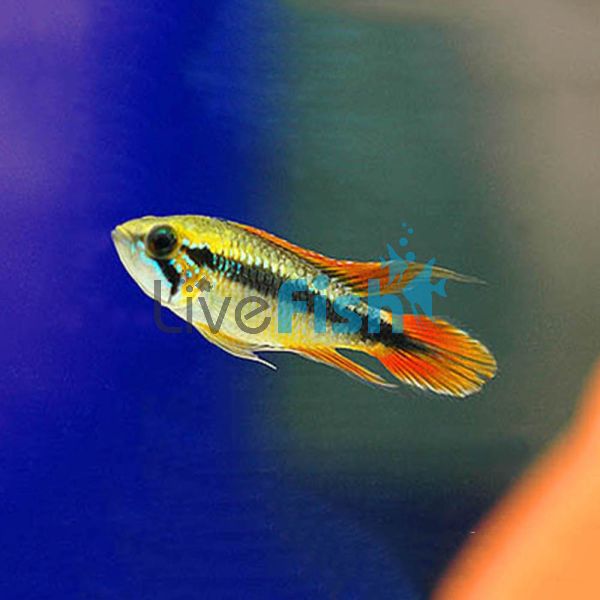Double Red Agassizii 3.5cm
Apistogramma Agassizii
Apistogramma Agassizii Double Red
$51.23
Availability:
In stock
SKU
CZ056035
- Buy 2 for $46.11 each and save 10%
- Buy 4 for $40.98 each and save 20%
- Buy 8 for $35.86 each and save 30%
More than 225 species, with estimates of 300 species, of cichlids are found throughout South America. An estimated 75% of these inhabit the mighty Amazon River Basin. Cichlids are also found in Central America, where they are well-known for their pugnacious behavior and their stunning colors. Most of these cichlid are large, thus requiring large tanks. These fish inhabit most types of water ways throughout Central America including lakes, streams, rivers, even underground water sources.
Their colorful appearance, the many different species available, their behavior and their breeding are just some of the reasons the Cichlids are one of the most popular aquarium fish.
Due to their aggressive behavior, the tank for cichlids should be as large as possible, with its length being more critical than its height; meaning the longer the better.
In the Cichlid tank there must be places of refuge. These can be rock caves, large pieces of driftwood or even inverted flowerpots. Most large species of Cichlids will dig up the substrate material, and occasionally will remove plants from the substrate. The Angelfish, Discus and the dwarf species Apistogramma all prefer a densely planted tank.
The water temperature should be in the range of 24-28 degrees celsius, slightly higher for the Discus. The diet should consist of live and frozen food of all kinds as well a large flake staple food. Large specimens can be feed Earthworms, garden Crickets and kitchen leftovers.
Their colorful appearance, the many different species available, their behavior and their breeding are just some of the reasons the Cichlids are one of the most popular aquarium fish.
Due to their aggressive behavior, the tank for cichlids should be as large as possible, with its length being more critical than its height; meaning the longer the better.
In the Cichlid tank there must be places of refuge. These can be rock caves, large pieces of driftwood or even inverted flowerpots. Most large species of Cichlids will dig up the substrate material, and occasionally will remove plants from the substrate. The Angelfish, Discus and the dwarf species Apistogramma all prefer a densely planted tank.
The water temperature should be in the range of 24-28 degrees celsius, slightly higher for the Discus. The diet should consist of live and frozen food of all kinds as well a large flake staple food. Large specimens can be feed Earthworms, garden Crickets and kitchen leftovers.
| Scientific Name | Apistogramma Agassizii |
|---|---|
| Care Level | Moderate |
| Common Names | Double red, Apistogramma double red |
| Diet | Carnivore |
| Fish Family | Cichlidae |
| Lifespan (years) | 10 |
| Max. Length (cm) | 7 |
| Min. Tank Volume (l) | 75 Litres |
| Origin | South America |
| Sociability | Peaceful |
| Water Conditions | 24-26° C, pH 5.0-7.0 |
Write Your Own Review
-
0Is it possible to request a specific gender of fish? I have a Female Agassizii Double Red Apistogramma And am looking to get her a mate. What is the process in regards to requesting a male when ordering online?Read Detail
 Submited by: Tim Murrell
Submited by: Tim Murrell
 15 Jan 2021
15 Jan 2021
-
Fish come to us un sexed, and are shipped out at random, your best chance is to order a group of fish to get a gender mix. You can email us an order number with a gender request, we can make a note for the dispatch team. No guarantee they can fill the request as it will depend on what is available at the time of packing your order, but they can try to accomodate if possible.Answered by Admin on 17 Mar 2021
-
- 1




